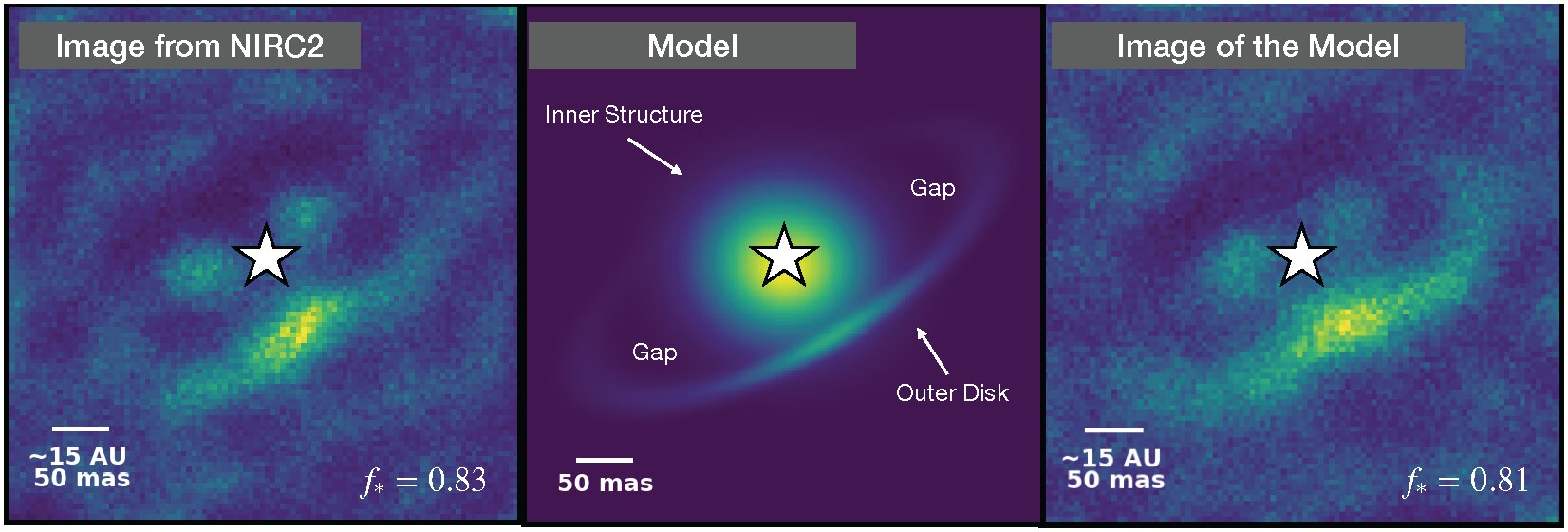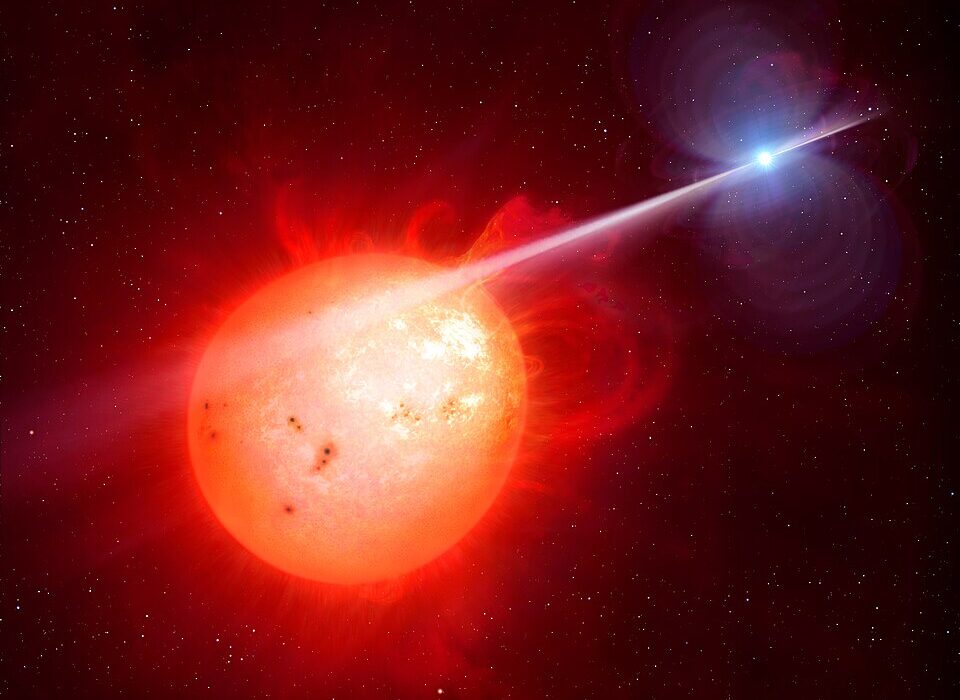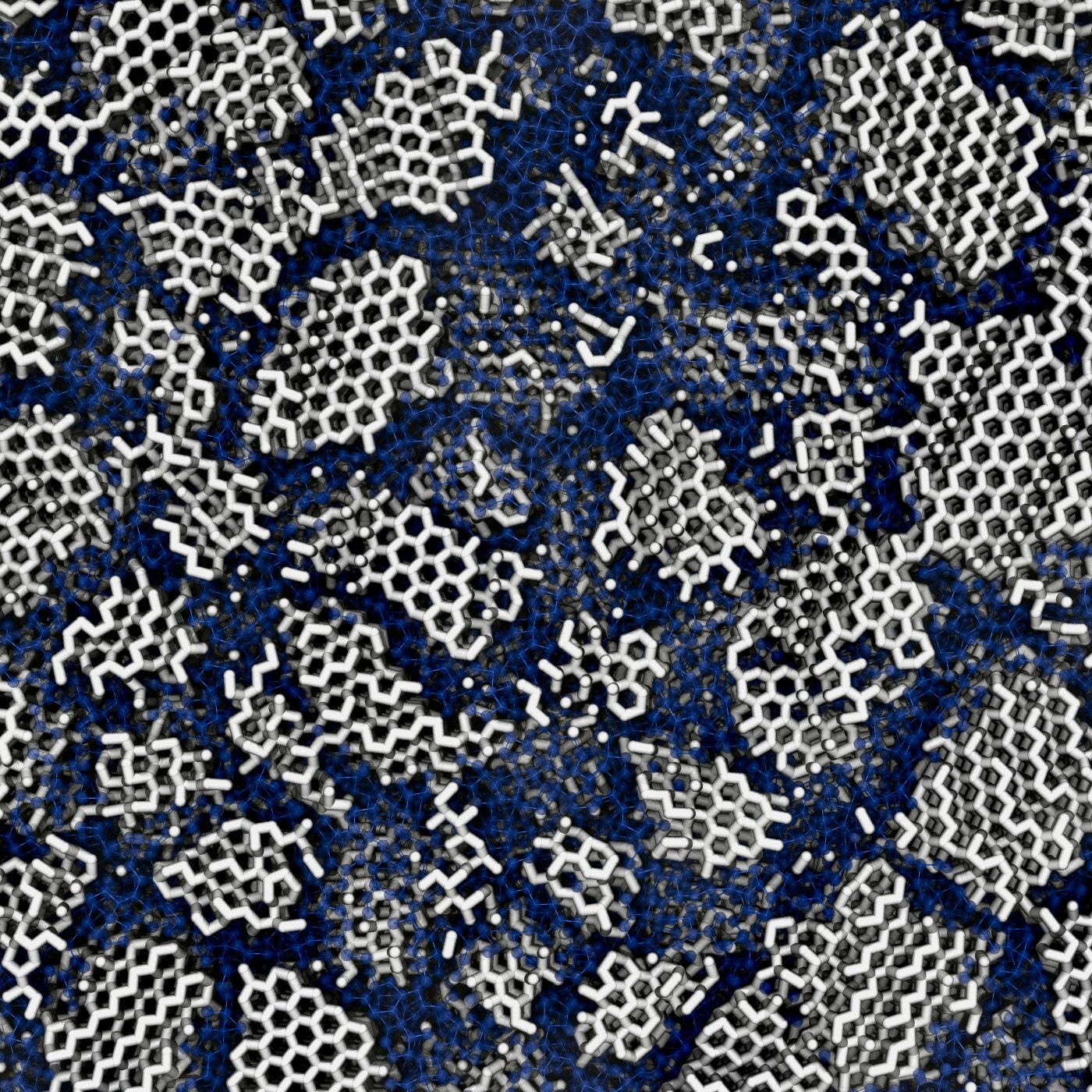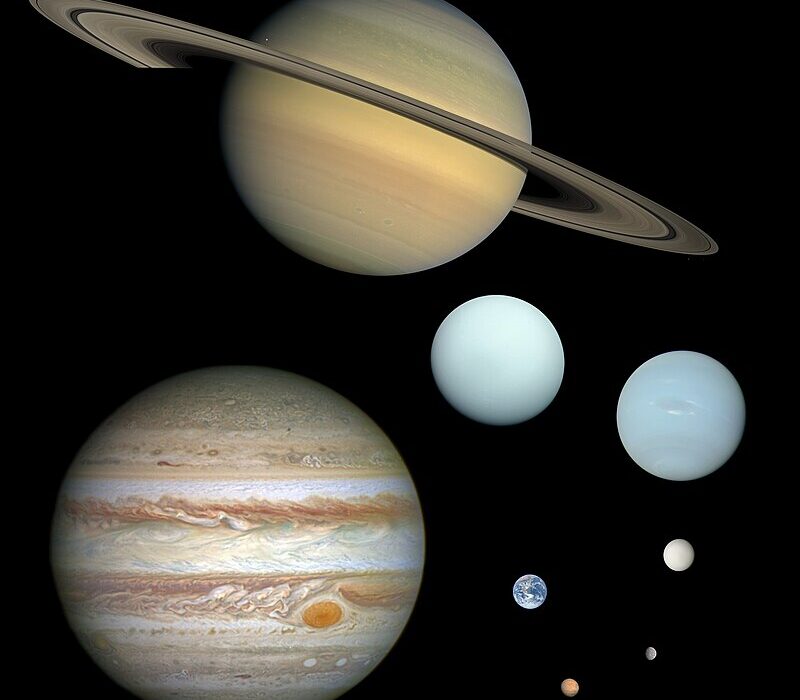Every human who has ever looked up at the stars has, in some quiet moment, wondered where we came from. How did our world form? What unseen forces gathered dust and gas into the blue planet we now call home? For centuries, these questions were answered with imagination and myth. Today, astronomers are using cutting-edge technology to watch the process unfold in real time—to witness, for the first time in human history, the very birth of planets.
That’s exactly what a team of astronomers at the W. M. Keck Observatory on Maunakea, Hawaiʻi, has done. Using some of the most advanced instruments on Earth, they’ve captured the closest-ever look at a young star’s surrounding disk—the dusty, swirling region where planets are born. Their target, a young star called HD 34282, sits about 400 light-years away in the constellation Lepus. And within that tiny speck of sky, they’ve uncovered a story as old as creation itself.
A Window Into a Cosmic Nursery
Imagine looking into a cradle where new worlds are being born. Around HD 34282 lies a massive ring of dust and gas, known as a transition disk—a place where gravity, heat, and time are weaving raw cosmic material into something new. These disks are like the incubators of the universe. Over millions of years, microscopic grains of dust collide, stick together, and grow into larger bodies—pebbles, then boulders, then planet-sized spheres.
But seeing this process in action is one of astronomy’s greatest challenges. Stars are blindingly bright, their light overwhelming the faint glow of the dust that encircles them. Traditional imaging techniques struggle to resolve the fine details of these delicate structures. Yet at Keck Observatory, astronomers are now peering closer than ever before—close enough to watch the universe at work.
The Power of Keck’s Vision
The research team, led by Christina Vides, a graduate student at the University of California, Irvine, used the Near-Infrared Camera (NIRC2), a sophisticated instrument mounted on Keck Observatory’s twin telescopes. What makes this camera so remarkable is its ability to penetrate the glare of starlight. With the help of adaptive optics, which compensates for the blurring effects of Earth’s atmosphere, NIRC2 can focus with astonishing precision—enabling scientists to see regions of space that were once thought invisible.
Vides and her team are part of a project called The Search for Protoplanets with Aperture Masking, or SPAM, a lighthearted name for a deeply ambitious endeavor. The goal of SPAM is to find and study the hidden worlds forming within dusty disks around young stars. Out of the thirty objects observed so far, HD 34282 has become one of the most intriguing.
By using aperture masking, a technique that effectively turns a telescope into an interferometer, the team can achieve extremely fine resolution—allowing them to map brightness patterns and structures just a few astronomical units from the star. These subtle variations hint at the gravitational fingerprints of forming planets, offering an intimate glimpse into the earliest stages of planetary creation.
Unraveling the Secrets of HD 34282
The images captured by Keck reveal a stunning sight: clumpy structures and bright arcs scattered across the disk. These features aren’t random; they’re signs of movement, turbulence, and possibly even planetary growth. Astronomers believe that as a young planet forms, it carves gaps and spiral patterns in the surrounding dust, shaping the disk like an artist sculpting clay.
Although no confirmed protoplanet was detected in this observation, the data provides the closest constraints yet on where one might be hiding. The team was also able to measure HD 34282’s mass and accretion rate, key properties that describe how the star feeds on surrounding gas—a process that influences how its disk evolves over time.
Each of these clues helps build a more complete picture of how planetary systems like our own emerge from the chaos of stellar birth. “By studying systems like this,” Vides explained, “we can watch planet formation in action and learn what conditions give rise to worlds like our own.”
A Rare Glimpse Into Creation
Detecting planets in the making is like trying to spot a firefly beside a lighthouse from hundreds of miles away. It’s extraordinarily rare and technically demanding. In fact, to date, only two confirmed protoplanets have ever been imaged directly—PDS 70 b and PDS 70 c, discovered in 2020, also with the help of Keck’s NIRC2 instrument.
Every new observation builds on that legacy, pushing the frontier of what’s possible. HD 34282 may not yet have revealed its planets, but the view it offers is closer than anything seen before—a direct look into the hidden workshop where nature assembles new worlds.
“This work is pushing the boundaries of what we can see,” said Vides. “Keck’s adaptive optics and masking capabilities make it possible to resolve features just a few astronomical units from the star—regions that are otherwise completely invisible.”
The Challenge of Seeing the Unseen
To understand how monumental this achievement is, consider what astronomers are actually doing. The distances involved are staggering. HD 34282 is 400 light-years away—so far that even light, traveling at nearly 300,000 kilometers per second, takes four centuries to reach us. At that distance, resolving a planet-forming disk just a few astronomical units across is equivalent to spotting a single coin lying on the surface of the Moon.
That’s why adaptive optics and aperture masking are such revolutionary tools. They allow astronomers to cut through the haze of atmospheric distortion, to sharpen their focus to levels once only dreamed of. In the age of space telescopes and giant mirrors, Keck Observatory remains one of humanity’s most powerful eyes on the universe, perched high above the clouds on Maunakea, watching the heavens unfold in exquisite detail.
Building the Legacy of Discovery
The SPAM project is just getting started. HD 34282 is one of thirty systems studied so far, and many more await. Each observation adds another piece to the cosmic puzzle—data that will eventually help scientists trace the timeline of planet formation, from dusty beginnings to mature planetary systems.
The future holds even more promise. The Keck team is preparing to use SCALES, a next-generation high-contrast imager now under development for the observatory. With SCALES, astronomers will be able to peer even deeper into the hidden structures of these disks, searching for the faintest hints of young planets as they ignite into existence.
As Vides put it, “Every new system we study helps us understand a little more about how planets form and evolve. It’s incredible that we can point a telescope at a young star hundreds of light-years away and actually see the conditions that could give rise to new worlds.”
The Human Element in a Cosmic Story
Beneath all the data, the imaging techniques, and the equations lies something deeply human: the desire to understand our place in the universe. Astronomy, at its core, is not just about stars and galaxies—it’s about curiosity and connection. It’s about the thrill of discovery, the wonder of seeing something no human has ever seen before, and the realization that we are made of the same materials that swirl around HD 34282 right now.
When astronomers look into a protoplanetary disk, they are, in a sense, looking backward in time—seeing echoes of our own solar system’s birth. Four and a half billion years ago, our Sun was also surrounded by a dusty ring like this one. From that swirling chaos, Earth emerged. Somewhere, perhaps, life looked up at its own night sky and began to wonder.
A Universe Still in Motion
The discovery at Keck Observatory is more than a scientific achievement; it’s a reminder that creation is ongoing. The universe is not a finished masterpiece—it is a work in progress, forever sculpting, spinning, and reshaping itself. Stars are born, planets take shape, and new worlds emerge in the quiet darkness between suns.
In every grain of dust orbiting HD 34282 lies the potential for something extraordinary—a planet, an ocean, maybe even life itself. And though we may never see those worlds with our own eyes, knowing that they are forming, right now, connects us in the most profound way imaginable.
The Endless Journey of Discovery
The study of HD 34282 is a glimpse into the future of astronomy, a preview of discoveries yet to come. As technology advances and telescopes grow more powerful, the curtain hiding the birthplaces of worlds continues to lift. One day, we may be able to watch a planet form in real time, to see the moment when dust becomes stone, and stone becomes home.
Until then, astronomers like Christina Vides and her team continue their patient vigil—eyes fixed on distant stars, hearts tuned to the rhythm of creation. Their work reminds us that the universe is not distant and cold, but alive with stories waiting to be told.
We, too, are part of that story. The same cosmic dust that forms new planets once formed us. And as we gaze into the starry sky, watching worlds being born, we are really witnessing our own beginnings—echoes of the ancient moment when the universe first decided to build something beautiful.
More information: Christina L. Vides et al, NIRC2 Interferometric Imaging of the HD 34282 Transition Disk’s Small Grain Structure, The Astrophysical Journal (2025). DOI: 10.3847/1538-4357/ae0932






